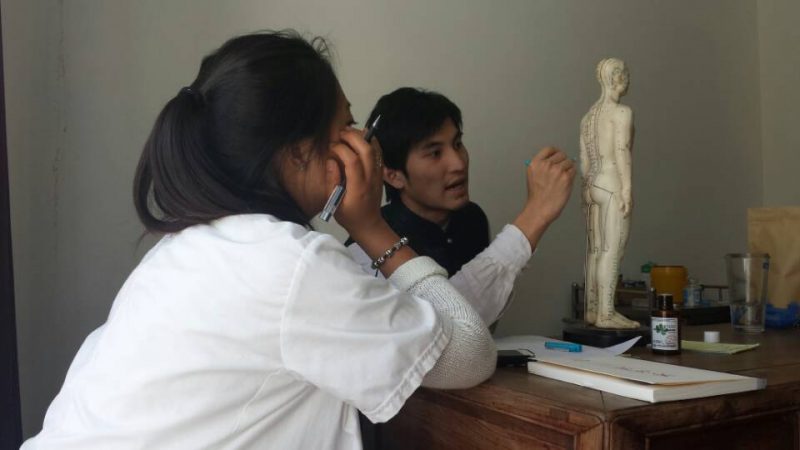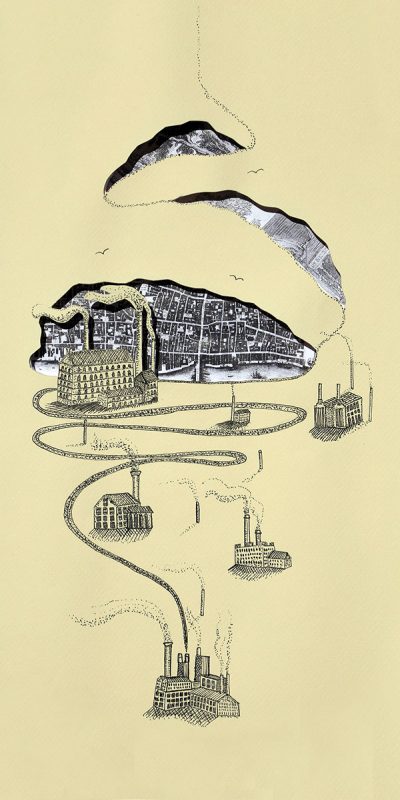Capitalism, productivity, and the re-evaluation of modern ethics
Posted on October 31, 2017Several years ago, I spent 5 months abroad in Shanghai observing traditional Chinese medicine (TCM) doctors practice acupuncture, massage, and herbal medicine. I was told that in contrast to western medical ideology, which examined the body through the division of its parts and treated illness through identification of symptoms and use of advanced diagnostic tools, eastern notions of healing were entrenched in self-preservation and resilience. Illness fell upon disharmony and imbalance within the body’s energy channels (called meridians) and in order to understand an individual’s condition, the body needed to be evaluated holistically.
The contrast between these two healing doctrines provides a comparison of hypothetical deduction vs. inductive methods (and an evaluation of a system’s parts vs. its whole), with the former pervading common western thought and linear thinking. Additionally, the model of TCM provides insight to our implicit biases surrounding healing and care in modern western medical practice and challenges for a re-evaluation of our capitalist driven values in how we perceive well-being, plan out behaviors, and direct future-oriented goals.

A photo of Dr. Wang explaining energy obstruction at meridian points from a previous acupuncture session
As eloquently stated by Didi Pershouse, the author of The Ecology of Care and a sustainable medicine practitioner:
“Although it appears that we are in charge of our own health, many of the choices we make about how to take care of ourselves are based on an underlying motivation, which is built right in to our healthcare system: to get back to work as quickly as possible…since people can’t afford to actually take time off from work to rest and recover, our healthcare system is geared primarily toward keeping people functional, which isn’t always the same thing as healing or preventing illness.”[1]
Reflecting upon this thought, I find it apparent that the lack of public resistance against this model of care stems not only from the normalization of health as a means to function and contribute to a productivity driven society (the capitalist framework provides little time and flexibility to question its motives), but from implicit trust and generative hope in a system that assumes endless potential possibilities and solutions. Perhaps, to understand the trust we have built in the potentiality of the modern healthcare system, we must trace our behaviors back to historical events that have led to the foundation of modern western culture and have established entrenched notions of how one should function within such a society.

Illustration by Mary Sinnott
Linear thinking and rationality: The rise of “production” post-19th century Industrial Revolution
“Ever since the Industrial Revolution, western society has benefited from science, logic, and reductionism over intuition and holism. Psychologically and politically we would much rather assume that the cause of a problem is ‘out there,’ rather than ‘in here.’”[2]
The technological boom and widespread shift in attitudes led not only to rampant growth in manufacturing, production, capital, and output, but also to a rise in quality of life. However, contextualized within our current state, what remains is a culture that continues to perpetuate material production and waste, and has not yet sufficiently embedded sustainable practices within its growing economic structures. As such, “the professionalized cognitive and occupational styles that were refined in the first half of this century” have rendered us incapable of adapting “to contemporary conceptions of interacting open systems and to contemporary concerns with equity.”[3] The repercussions of our detachment and the lack of interconnectedness within greater systems can be seen from behaviors and outcomes in the modern free market.
Bounded rationality: Emergence (gone awry) in a free market of bottom-up behaviors
“We often don’t foresee (or choose to ignore) the impacts of our actions on the whole system. So instead of finding a long-term optimum, we discover within our limited purview a choice we can live with for now, and we stick to it, changing our behavior only when forced to.”[4]
Capitalizing upon human tendencies to act through short-term goals and occurrences, current frameworks that drive free market behavior show an ever-increasing detachment between individual players and the systems that surround us. Driven by individualistic pursuits for survival, prosperity, and success, we have, somewhat emergently, created a system that positively reinforces models of increasing growth with little consideration for its long-term implications. However, I would say the emergence of such a system is hardly within our control as individuals, as “bounded rationality means that people make quite reasonable decisions based on the information they have. But they don’t have perfect information, especially about more distant parts of the system.”[5]
“It would be nice to have better ways of monitoring what we’re up to so that we could recognize change while it is occurring…we are all obsessed by the need to feed information in, as fast as we can, but we lack sensing mechanisms for getting anything much back.”[6] I question, how might we identify leverage area(s) to design feedback interventions to address this gap between human behaviors driven by near-future goals and actions that preserve long-term well-being. When will we realize that our own well-being is contingent upon the well-being of others and the resiliency of the systems in which we live in?
How might we design for a more connected present and future?
“When profit, rather than necessity, drives innovation, the things being sold tend to get further and further away from basic human needs, and the real needs are often forgotten in the rush toward novelty.”[7]
In reflection upon this sentiment, I think back to my experience observing TCM physicians performing patients’ physical examinations. Physicians would undergo traditional pulse assessment by gently pressing against a patient’s two wrists and sensing gentle changes in rhythm and intensity. To think how such an intimate diagnostic practice has evolved to common use of auscultation devices, such as stethoscopes and CAA machines, I cannot help but notice the ease of overlooking implications such technologies and processes have on creating distance and loss of connectedness within the healing of ourselves and through our relationships with others. How might we re-evaluate the consequences of our actions not only in the near-future, but also through their potential to snowball into unforeseen wide-scale implications that shape our everyday behaviors and cultural attitudes about what is deemed valuable, desirable, and normal? How might we encourage ownership of responsibility and consequential action from awareness through design-led interventions?
As TCM approaches the examination of illness at its root cause rather than through its treatment of symptoms, a parallel could be drawn with Rittel and Weber’s approach to wicked problems – and how wicked solutions lie at the core of such problems. However, in finding the root, we must consider the following claim:
“We have been learning to ask questions about the outputs of actions and to pose problem statements in valuative frameworks. We have been learning to see social processes as the links tying open systems into large and interconnected networks of systems, such that outputs from one become inputs to others. In that structural framework it has become less apparent where problem centers lie, and less apparent where and how we should intervene even if we do happen to know what aims we seek”
While it may be easy to feel lost in this statement, my argument would be that perhaps it is not so much about identifying “where” to intervene within such valuative frameworks, but about maintaining mindfulness of our connected selves in daily practice. Perhaps from there, a new form of our current system will become emergent if we hold ourselves to this responsibility (but could we also design for the conditions of emergence by intersecting interventional practice with an understanding of human behavior*)?
*In probing my curiosity to combine behavioral science with design intervention
– J Liu
[1] Pershouse, Didi. The Ecology of Care. Thetford: Mycelium Books, 2016.
[2] Meadows, Donella H., and Diana Wright. “Introduction: The Systems Lens.” Thinking in Systems: A Primer, Chelsea Green Publishing, 2015.
[3] Rittel, Horst W.J., and Melvin M Webber. “Dilemmas in a General Theory of Planning.” Policy Sciences, no. 4, 1973, pp. 155–169.
[4] Meadows, Donella H., and Diana Wright. “Chapter Four: Why Systems Surprise Us.” Thinking in Systems: A Primer, Chelsea Green Publishing, 2015.
[5] Meadows, Donella H., and Diana Wright. 106.
[6] Johnson, Steven. Emergence: The Connected Lives of Ants, Brains, Cities, and Software. Scribner, 2004.
[7] Pershouse, Didi. 89.